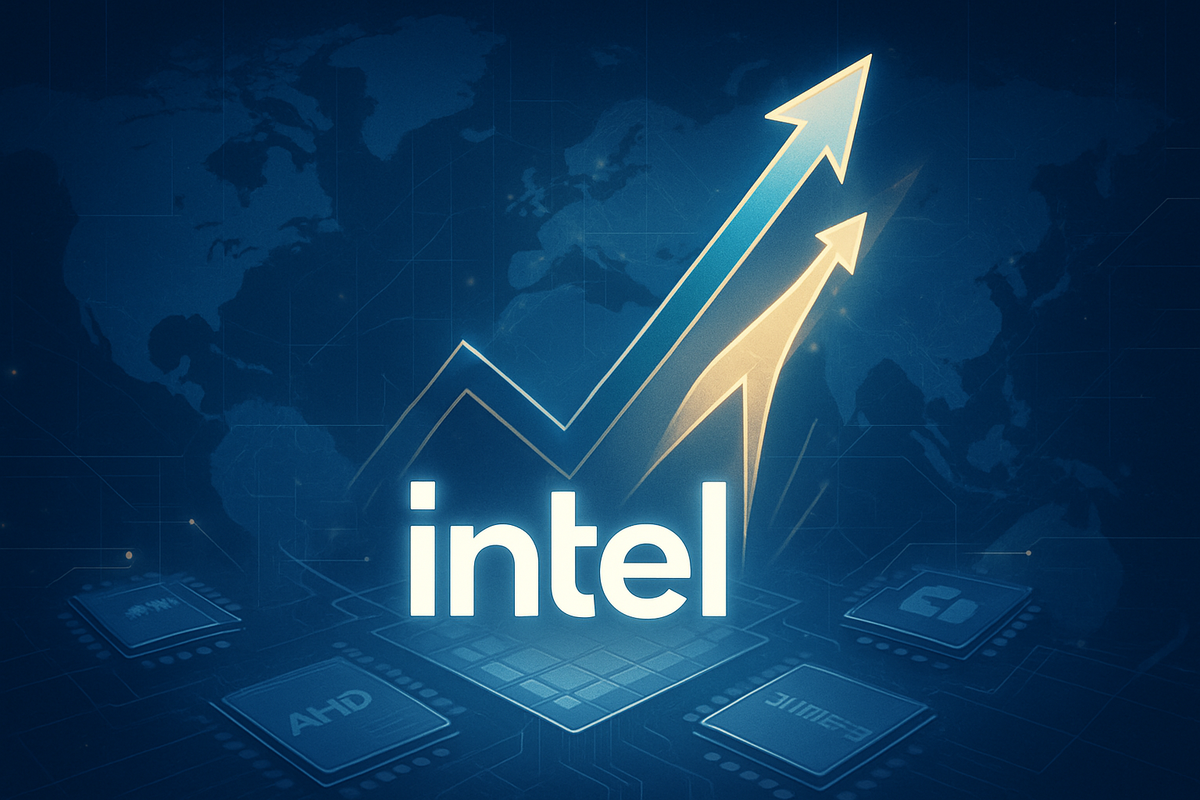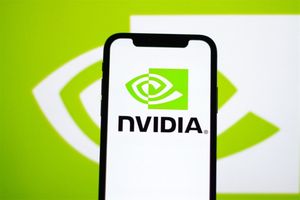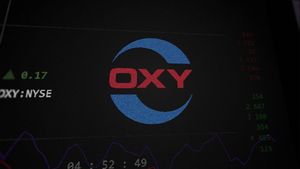
Intel's (NASDAQ: INTC) stock has seen a dramatic resurgence, nearly doubling its value since its 2025 lows, fueled by a confluence of strategic investments, new leadership, and burgeoning optimism surrounding its ambitious Intel Foundry Services (IFS) initiative. The semiconductor giant, long a dominant force but recently challenged, is now actively pursuing partnerships to manufacture chips for other industry players, including whispers of a monumental deal with rival Advanced Micro Devices (NASDAQ: AMD). This pivot has sent ripples through the global semiconductor industry, signaling a potential shift in the competitive landscape and offering a glimpse into a more diversified and robust supply chain.
This remarkable turnaround, observed in early October 2025, comes as Intel navigates a complex financial landscape, still reporting net losses and negative free cash flow. However, the market's reaction suggests a strong belief in the company's IDM 2.0 strategy, which aims to regain process technology leadership and establish IFS as a major player in the contract manufacturing space. The implications of Intel's revitalized foundry business extend beyond its own balance sheet, promising to reshape how chips are designed and produced, with significant ramifications for competitors, partners, and technological innovation worldwide.
A Phoenix Rising: Intel's Stock Doubling and Foundry Drive
Intel's journey from its 2025 low of $17.67 in April to trading around $35-$36 in early October 2025 represents an impressive near 80% year-to-date gain. This significant rally is underpinned by a series of strategic maneuvers and external support. A substantial injection of capital, including an estimated $8.9 billion to $11.1 billion from the U.S. government through the CHIPS Act, has provided a crucial financial lifeline. This was further bolstered by a $5 billion investment from Nvidia (NASDAQ: NVDA), which also acquired a 4% stake in Intel and forged a partnership to co-develop custom x86 CPUs for AI infrastructure and integrated System-on-Chip (SOC) solutions for the PC market. SoftBank (TYO: 9984) also contributed $2 billion, and Apple (NASDAQ: AAPL) is reportedly in early discussions regarding a potential investment.
The leadership transition in March 2025, with Lip-Bu Tan taking the helm as CEO following Pat Gelsinger's departure in late 2024, has been pivotal. Tan's appointment has cultivated a renewed sense of optimism, shifting the narrative from Intel's recent struggles to a potential era of revival. This sentiment has been amplified by the promising prospects of Intel Foundry Services (IFS), which has emerged as a cornerstone of the company's IDM 2.0 strategy—a hybrid manufacturing approach designed to reclaim process technology leadership and expand third-party foundry capacity.
Key developments in IFS include early-stage talks with long-time rival Advanced Micro Devices (NASDAQ: AMD) to potentially manufacture chips, a move that would represent a significant strategic victory for Intel given AMD's current reliance on Taiwan Semiconductor Manufacturing Company (NYSE: TSM). Furthermore, Microsoft (NASDAQ: MSFT) has confirmed plans to utilize Intel's processes for its in-house designed chips, while Amazon (NASDAQ: AMZN) and the U.S. Department of Defense are confirmed customers for Intel's advanced 18A process node. The 18A process, currently in risk production with volume manufacturing slated for late 2025, is expected to power internal products like Panther Lake client CPUs and Clearwater Forest server processors, alongside designs from its first external customer in the first half of 2025. Intel is also sharing early design kits for its next-generation 14A processes, attracting interest from Nvidia and Apple.
Shifting Sands: Potential Winners and Losers in the Semiconductor Arena
Intel's (NASDAQ: INTC) aggressive push into foundry services and its stock's remarkable ascent position the company as a potential significant winner. If IFS successfully secures major third-party manufacturing contracts, particularly from a high-volume client like Advanced Micro Devices (NASDAQ: AMD), it could unlock substantial new revenue streams and dramatically improve its financial health, which has recently been characterized by net losses and negative free cash flow. The strategic investments and government support through the CHIPS Act also provide Intel with the necessary capital to compete with established foundry giants, potentially allowing it to regain its technological edge and market share.
Conversely, established foundry leaders like Taiwan Semiconductor Manufacturing Company (NYSE: TSM) and Samsung (KRX: 005930) could face increased competition. TSMC, which currently dominates the contract manufacturing market and serves clients like AMD, could see a portion of its business diverted if Intel's IFS proves competitive in terms of technology, cost, and capacity. While TSMC's advanced nodes remain highly sought after, Intel's aggressive roadmap for 18A and 14A processes, coupled with geographical diversification incentives from governments, could challenge TSMC's near-monopoly. Samsung, also vying for a larger share of the foundry market, will find another formidable competitor in Intel.
For fabless semiconductor companies, such as Advanced Micro Devices (NASDAQ: AMD) and Nvidia (NASDAQ: NVDA), Intel's foundry expansion presents a dual opportunity. On one hand, it offers a potential new manufacturing option, diversifying their supply chains away from a heavy reliance on TSMC. This could lead to better negotiation power, reduced geopolitical risks, and potentially more customized chip development. Nvidia's existing investment and partnership with Intel to co-develop custom x86 CPUs for AI infrastructure already highlight the strategic benefits of this collaboration. However, these companies will also need to carefully evaluate Intel's manufacturing capabilities and cost-effectiveness against their existing foundry partners. Microsoft (NASDAQ: MSFT) and Amazon (NASDAQ: AMZN), as confirmed IFS customers, stand to gain from direct access to Intel's advanced process technologies for their in-house chip designs, potentially enhancing their competitive edge in cloud and AI.
Broader Implications: Reshaping the Global Chip Landscape
Intel's (NASDAQ: INTC) resurgence and its ambitious foundry strategy are not isolated events but rather integral to broader industry trends shaping the global semiconductor landscape. The most significant trend is the push for supply chain diversification and resilience. Geopolitical tensions, particularly between the U.S. and China, and the lessons learned from the COVID-19 pandemic-induced chip shortages, have underscored the vulnerability of a highly concentrated semiconductor manufacturing base. Governments worldwide, including the U.S. with its CHIPS Act, are actively incentivizing domestic chip production and encouraging multiple foundry options to mitigate future disruptions. Intel's IFS, with its U.S.-based fabs and commitment to advanced process nodes, directly aligns with this strategic imperative, offering a crucial alternative to the predominantly Asian-based foundry ecosystem.
The potential ripple effects on competitors and partners are profound. For Taiwan Semiconductor Manufacturing Company (NYSE: TSM), the undisputed leader in advanced foundry services, Intel's aggressive entry poses a significant long-term challenge. While TSMC's technological lead remains substantial, Intel's government backing and substantial investments aim to close this gap rapidly. This increased competition could spur further innovation across the industry, potentially leading to faster technological advancements and more competitive pricing for fabless companies. For existing partners like Nvidia (NASDAQ: NVDA), Microsoft (NASDAQ: MSFT), and Amazon (NASDAQ: AMZN), Intel's foundry services offer enhanced collaboration opportunities and a more secure, potentially localized, supply chain for their critical chip designs.
Regulatory and policy implications are also at play. The U.S. CHIPS Act funding, a cornerstone of Intel's investment strategy, is explicitly designed to bolster domestic semiconductor manufacturing capabilities. This governmental support not only provides financial aid but also signals a policy environment favorable to companies like Intel that are committed to onshore production. This could set a precedent for other nations to implement similar industrial policies, further decentralizing chip manufacturing globally. Historically, the semiconductor industry has seen various shifts in dominance, but the current push for geographical diversification and the integration of design and manufacturing (IDM 2.0) by a major player like Intel marks a significant departure from the fabless-foundry model that has largely prevailed in recent decades. This move could redefine the competitive dynamics and operational models for the next generation of semiconductor innovation.
The Road Ahead: Navigating Opportunities and Challenges
Looking ahead, Intel's (NASDAQ: INTC) trajectory in the short to long term hinges critically on the successful execution and profitability of its Intel Foundry Services (IFS). In the short term, securing the rumored manufacturing deal with Advanced Micro Devices (NASDAQ: AMD) would be a monumental validation for IFS, significantly boosting its credibility and order book. The successful ramp-up of its 18A process node in late 2025 and the subsequent 14A process will be crucial for attracting and retaining high-value customers. However, Intel must overcome its current financial challenges, including persistent net losses and negative free cash flow, to demonstrate sustainable growth. The market will be closely watching Q3 2025 earnings, projected to be near breakeven, as an indicator of its immediate financial health.
Long-term possibilities for Intel include regaining process technology leadership, achieving its target of $8-$10 billion in cost savings by the end of 2025, and ultimately reaching non-GAAP gross margins of 60% through its IDM 2.0 strategy. This would firmly establish Intel as a dual-threat player—both a leading chip designer and a formidable foundry. Such a position would enable strategic pivots, allowing Intel to adapt more flexibly to market demands and technological shifts. The collaboration with Nvidia (NASDAQ: NVDA) on custom x86 CPUs for AI infrastructure also opens up substantial market opportunities in the burgeoning AI sector, expanding Intel's total addressable market by an estimated $100 billion.
However, significant challenges remain. Intel faces intense competition from established foundries like Taiwan Semiconductor Manufacturing Company (NYSE: TSM) and Samsung (KRX: 005930), which possess decades of experience and deeply entrenched customer relationships. The substantial capital expenditure required to maintain cutting-edge process technology is immense, demanding continuous innovation and efficient operations. Market opportunities will emerge in areas requiring secure, geographically diversified supply chains, especially for defense and critical infrastructure. Potential scenarios range from Intel successfully transforming into a dominant foundry player, to a more modest role as a niche provider, or even a protracted struggle if profitability remains elusive. Investors should watch for key indicators such as IFS customer wins, progress on advanced process nodes, and improvements in overall financial metrics, particularly profitability and free cash flow.
A New Era for Intel and the Semiconductor Industry
Intel's (NASDAQ: INTC) journey from its 2025 stock lows to a near doubling of its share price, coupled with its aggressive pursuit of Intel Foundry Services (IFS), marks a pivotal moment for the company and the broader semiconductor industry. The key takeaways from this event are multi-faceted: a renewed investor confidence fueled by strategic investments and new leadership, the strategic importance of supply chain diversification driven by geopolitical factors, and Intel's bold attempt to redefine its role as both an integrated device manufacturer and a leading-edge foundry. The potential manufacturing deal with Advanced Micro Devices (NASDAQ: AMD) stands as a symbolic and practical testament to the growing acceptance and credibility of IFS.
Moving forward, the market will be closely assessing Intel's ability to translate its newfound momentum into sustainable financial performance. While the stock rally reflects optimism, the underlying financials still present challenges, with net losses and negative free cash flow. The successful ramp-up of advanced process nodes like 18A and 14A, coupled with securing and scaling manufacturing contracts from key customers like Microsoft (NASDAQ: MSFT), Amazon (NASDAQ: AMZN), and potentially Apple (NASDAQ: AAPL), will be critical determinants of IFS's long-term viability and profitability.
The lasting impact of Intel's foundry initiative could be a more resilient and geographically diversified global semiconductor supply chain, offering more options for fabless companies and potentially accelerating technological innovation through increased competition. Investors should keenly watch for further announcements regarding IFS customer engagements, progress on process technology roadmaps, and, most importantly, a clear path to profitability for the foundry business. Intel's current trajectory suggests a company determined to reclaim its former glory and reshape the future of chip manufacturing, making the coming months a crucial period for observation and evaluation.
This content is intended for informational purposes only and is not financial advice






